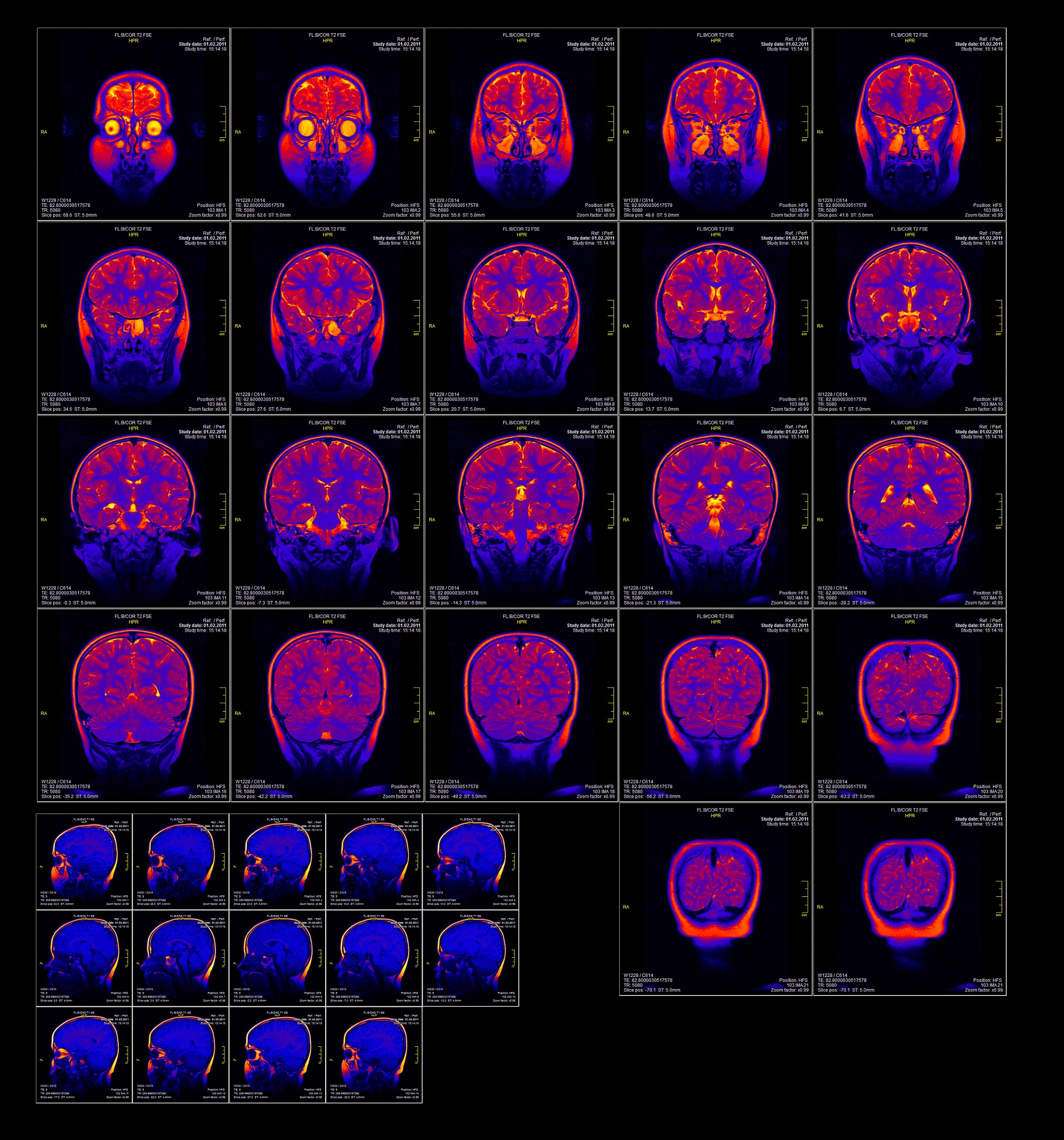Magnetic resonance imaging
What is magnetic resonance imaging (MRI)?
MRI is based on the magnetisation properties of cellular protons. The application of a strong magnetic field causes the protons within cells to shift direction, which will return to their original position over time (“precession”). The rate of precession differs across tissue types (such as grey matter and white matter in the brain), which can be interpreted by specialised programs to represent a 3D image.
What is the evidence for MRI findings in people with bipolar disorder?
Grey matter decreases compared to controls
High quality evidence shows small decreases in hippocampal subfields in people with bipolar disorder. Moderate quality evidence also suggests decreases in bilateral insula, superior temporal gyrus, superior and ventral medial prefrontal cortex, anterior cingulate cortex, left dorsalmedial prefrontal cortex, left ventrolateral prefrontal cortex, and right precentral gyrus. Moderate to low quality evidence suggests decreases in left medial frontal, right inferior frontal, precentral frontal, left inferior longitudinal fasciculus, left insula, superior corona radiate, and the left limbic posterior cingulum.
In people with first-episode bipolar disorder, moderate to high quality evidence suggests small decreases in whole brain grey matter. In youth with bipolar disorder, moderate quality evidence found decreases in the left orbitofrontal cortex, right claustrum, and right dorsolateral prefrontal cortex. In people with bipolar disorder and psychotic symptoms (not necessarily diagnosed with bipolar I disorder), moderate quality evidence suggests decreases in bilateral superior frontal gyri, bilateral insula, bilateral median cingulated/paracingulate gyri, left anterior cingulate/paracingulate gyri, and right precentral gyrus (particularly in females). In people diagnosed with bipolar I disorder, decreases were also found in the right superior temporal gyrus, and the rolandic operculum.
Grey matter increases compared to controls
Moderate quality evidence suggests increases in the cerebellum, bilateral middle frontal gyrus, right middle temporal gyrus, right inferior temporal gyrus, the right middle occipital gyrus, left putamen, and left posterior cingulate cortex of people with bipolar disorder. In people diagnosed with bipolar I disorder, increases were also found in the left precuneus. In relatives of people with bipolar disorder, moderate to high quality evidence suggests small increases in intracerebral volume, with no differences in the thalamus, striatum, amygdala, hippocampus, pituitary, or frontal lobes. Compared to people with bipolar disorder, relatives also show a small increase in grey matter volume.
White matter decreases compared to controls
Moderate to high quality evidence suggests decreases in the posterior corpus callosum extending to the posterior cingulate cortex, with smaller reduced clusters in the left optic radiation and right frontal superior longitudinal tracts. In people with first-episode bipolar disorder, moderate to high quality evidence suggests small decreases in total white matter.
White matter increases compared to controls
Moderate to high quality evidence suggests small increases in the cerebellum and the right lenticular nucleus.
Ventricular changes
Moderate to high quality finds an increased risk of having a cavum septum pellucidum, and increased volume in the lateral and third ventricles.
Compared to people with schizophrenia
Moderate quality evidence suggests fewer grey matter reductions in people with bipolar disorder in the right dorsomedial frontal cortex and the left dorsolateral prefrontal cortex. While grey matter reductions were more extensive in male-dominated schizophrenia samples, there was no effect of gender on the findings in bipolar disorder. Moderate to high quality evidence shows fewer reductions in people with bipolar disorder in the amygdala and in hippocampal regions of the left cornu ammonis (CA)1, left CA2/3, left CA4/dentate gyrus, right presubiculum and right subiculum, with no differences in the left presubiculum or subiculum, or right CA1, CA2/3, or CA4/dentate gyrus.
Compared to people with major depression
Moderate to low quality evidence suggests increased grey matter volume in people with bipolar disorder in the right middle frontal gyrus, left hippocampus, right inferior temporal gyrus, left inferior parietal lobule, and right cerebellar vermis.
Compared to people with borderline personality disorder
Moderate to low quality evidence finds reduced grey matter volume and density in people with bipolar disorder in bilateral medial orbital frontal cortex, right insula, and right thalamus, and increases in the right putamen. In borderline personality disorder, grey matter was reduced in bilateral medial prefrontal cortex, bilateral amygdala, and right parahippocampal gyrus.
Medication effects
Compared to bipolar patients not on lithium treatment, high quality evidence shows those on lithium had small increased global grey matter volume. When comparing either group (lithium treated or lithium free) to controls, there were no differences in global grey matter volume. Lithium-treated patients showed fewer hippocampal reductions than patients treated with other medications.
December 2021
mage: © Kondor83 – Fotolia – stock.adobe.com
Fact Sheet Technical Commentary
Green - Topic summary is available.
Orange - Topic summary is being compiled.
Red - Topic summary has no current systematic review available.
